Note: As my views on Kurosawa Kiyoshi’s 1997 Cure have not changed significantly since I was first blindsided by it, the below review of the film itself is a rewrite of my previously posted coverage of the Japanese DVD release and the 2018 Eureka Blu-ray. My comments on the special features on the Blu-ray that have been carried over to this UHD have also been updated and reposted from the earlier review. This review also contains some spoilers for newcomers to the film, but these are restricted to the film's first half.
| |
“He's an absolute master of light, framing and pacing, and he has so much control over all three that there are moments in his movies when the slightest gesture in the corner of the frame will send a shiver down your spine… |
| |
“Along with Pulse, which is about ghosts on the Internet, Cure is his most terrifying movie… |
| |
“There are startling images and moments in this picture that will haunt you for a long time to come, and I suppose I should say that it's not for the faint of heart. But be brave, because it's worth it. Kurosawa is a major filmmaker.” |
| |
Martin Scorsese on Kiyoshi Kurosawa and Cure* |
As the sort of upbeat lightweight music you would usually expect to hear on a cheery children's TV show tinkles away on the soundtrack, a middle-aged man (Hotaru Yukijirō) walks purposefully through the streets of Tōkyō and into the gloom of a darkened underpass. Here he pulls a length of water pipe from a wall, which he then takes home and uses to calmly beat a sex worker unconscious, then showers to wash the blood from his body after committing an act of violence we can be rather glad that we did not witness. When the body of the woman is discovered by a cleaner and the police are called to his apartment, they initially believe that the man has fled without his clothes, but detective Takabe Kenichi (Yakusho Kōji) discovers him hiding in a small utility cupboard, naked, hunched up, and trembling with fear. Back at the police station, the man admits intent but claims that after killing the woman he was stunned by the horror of what he had done. This, we learn, is the third such case in the past two months. No specifics about the murders have been leaked to the press, and no clear connection between them has yet been discovered. They are nonetheless linked by a lethal cross-shaped wound inflicted on the torso of each victim, and the fact that right up until the moment they committed their crimes, each of the perpetrators had led ordinary lives and were considered rational people.
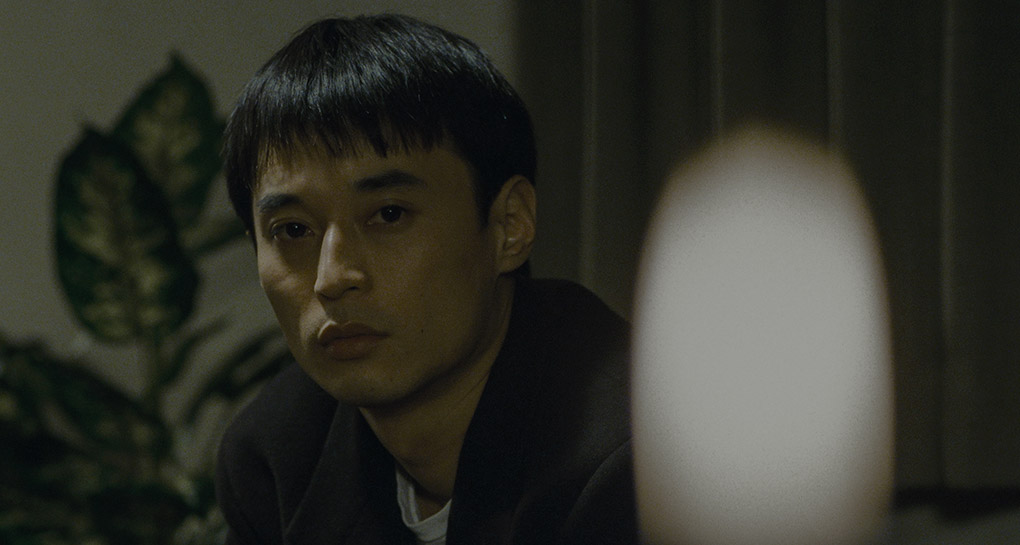
On an otherwise deserted beach in Shirasato, elementary schoolteacher Hanaoka (Toda Masahiro) encounters a young drifter (Hagiwara Masato) who does not appear to know where or even who he is. When the drifter pleads for help, Hanaoka takes him home and discovers the name 'Mamiya' sewn into his coat. "That's fine" the drifter responds distractedly, "Mamiya can be my name. It probably is." When Hanaoka attempts to tease further information from him, however, his efforts are frustrated by Mamiya's inability to recall things he was told just a few seconds ago, responding with the sort of attention-deficit questions that an infant might ask. Mamiya then flicks on his Zippo lighter and asks Hanaoka to tell him more about his wife, Tomoko. The following day, Mamiya has moved on, and Hanaoka inexplicably kills Tomoko by severing her carotid arteries with cuts that leave a cross-shaped wound on her body, then hurls himself through an upstairs window of their house. Again, no motivation for his actions can be found, and when questioned in hospital later, a stunned and ultimately distraught Hanaoka cannot understand why he murdered his wife, though claims that at the time it seemed the natural thing to do.
Twice before in separate reviews of his films I've told the story of how I was introduced to the cinema of Kurosawa Kiyoshi, and loth though I am to repeat myself again, it's more relevant to Cure than any other work in this director's fascinating oeuvre. Back in 2004, I was visiting a friend who worked at the Japan Academy of Moving Images in Tōkyō (a celebrated film school founded by director Imamura Shohei), and on my final day there, during the course of an evening of cheerful heavy drinking in a Shinjuku basement bar, I was given a DVD of Cure by two of the school's students as a parting gift. Their reason for selecting this particular present (quite apart from the fact that it was a rare Japanese DVD with optional English subtitles) was that its director, Kurosawa Kiyoshi, was a filmmaker whose work they deeply admired but whom they felt was not getting his due attention outside of Japan. I was blown away by the film and wrote a review of it for the site (which this review is effectively an expanded and amended third version of), knowing that the Japanese disc would likely not be easy or cheap to import, but in the hope that some enterprising UK distributor would release the film on DVD here in what was then the near future. To my astonishment and dismay, particularly in light of the film’s acclaim at a range of film festivals worldwide, that failed to happen. As far as I'm aware, the first Kurosawa film to land a UK DVD release was his 2001 Pulse [Kairo], which was followed by his 2003 Bright Future (Akarui mirai), both of which were put out by the long-since departed Tartan, and neither were exactly standard-setters on the technical front. Ultimately, it was the 2009 Tōkyō Sonata that brought Kurosawa the more widespread UK critical attention he deserved, and since then, Third Window released two of his 1998 V-Cinema features, The Serpent's Path (Hebi no michi) and The Eyes of a Spider (Kumo no Hitomi) on DVD, and Eureka made his sublimely unsettling return to genre filmmaking, Creepy (Kurīpī: Itsuwari no rinjin, 2016), and his supernatural love story Journey to the Shore (Kishibe no tabi, 2015) available on Blu-ray, both under the Masters of Cinema banner. Yet despite the fact that Cure got a favourable mention almost every time a new Kurosawa film was discussed or reviewed, and the fact that it is widely regarded as the director's breakthrough film, we had to wait a staggering 14 years for it to land a release of any kind in the UK, when Eureka released it on a Masters of Cinema Blu-ray.
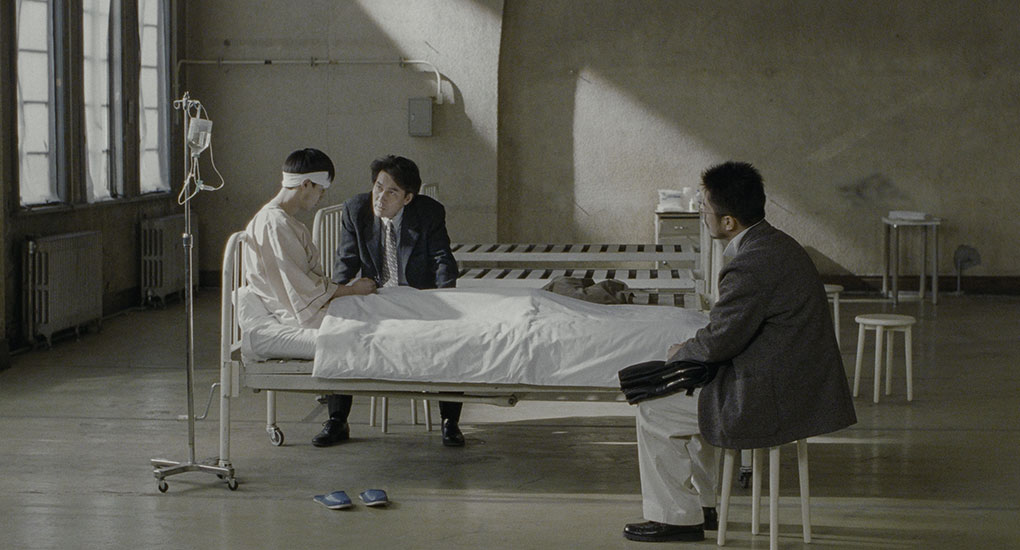
Cure is often cited as an early work of the J-Horror cycle, which was memorably kick-started by the international success of Nakata Hideo's Ringu in the year following Cure's Japanese release. As much a detective story as a psychological horror tale, Cure differs from most of the other films of this subgenre in its absence of clearly defined supernatural elements and refusal to indulge in jump-scares, instead creating a chilling air of sometimes inexplicable menace and becoming as disturbing in its implications as what it is prepared to show or to have its characters surmise. It’s also unique, as Tom Mes points out in his video essay on this very disc, for being a serial killer film in which, a touch paradoxically, there is no serial killer.
Central to the story are the characters of Takabe, the detective who is investigating the killings, and Mamiya, the young man who, through a process of hypnosis, auto-suggestion, or perhaps something more otherworldly, appears to be provoking otherwise ordinary people into committing them. On the surface, this must read like a setup for a horror inflected but structurally traditional police thriller, where the cops repeatedly uncover new information but are always one step behind their elusive prey, until the inevitable breakthrough that leads to a final showdown between lead detective and killer. And yes, the detective here does use his investigative powers to track down vital clues, and there is something of a showdown between the protagonist and antagonist in the later stages, but neither of these play remotely to expectations. Indeed, Takabe's most effective detective work is done after Mamiya is in custody, and the final showdown provides neither visceral thrills nor a real sense of closure for a story that looks set to continue long after the closing credits.
Every element of the story ultimately revolves around these two men and their eventual interaction, although this does not mean that we ever really get to know either of them that intimately. Mamiya in particular remains a mysterious and deliberately perplexing figure throughout. Is he simply a psychology student whose study of hypnosis has driven him off the deep end, prompting him to lose his marbles and encourage others to do likewise, or is there a more supernatural aspect to his being? An unlikely-looking threat, this dishevelled, shuffling, and seemingly wasted young man was apparently once a functioning member of society, but along the way something has happened to transform him into, well, whatever it is that he has actually become. Takabe's psychiatrist colleague, Dr. Sakuma (Ujiki Tsuyoshi), at one point cynically offers up the old adage, "The Devil made him do it." Is Mamiya a demon in humdrum, everyday form? Mamiya himself talks at one point of being emotionally inverted – "The things that used to be inside of me are all outside, so I can see all of the things inside of you, but the inside of me is empty."
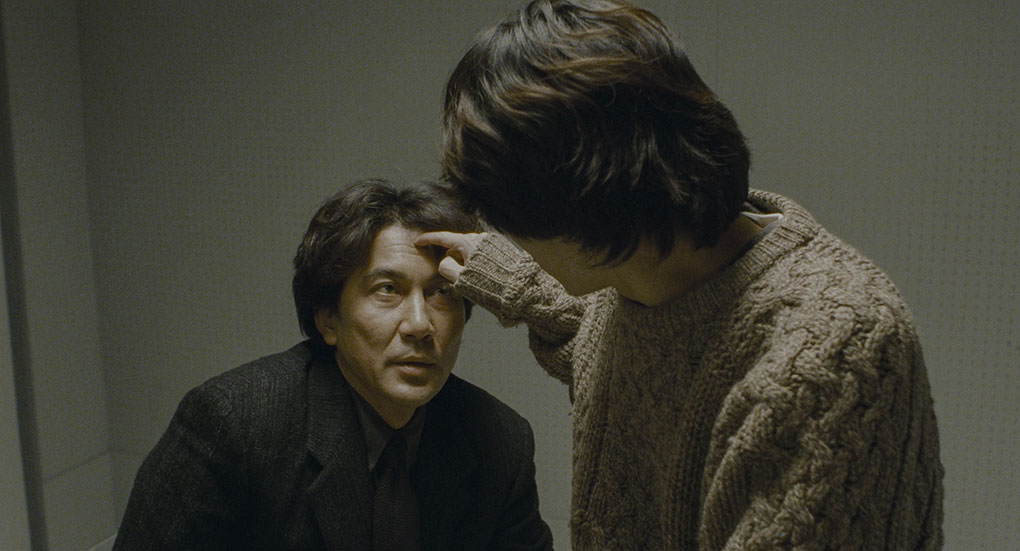
Early in the story, it becomes clear that Mamiya knows things about the private lives of those he targets that he should not be privy to, suggesting an ability to read the minds of his victims – "I don't remember anything. You do," he tells one of them. But later, when he pulls the same trick on Takabe, it turns out that he extracted the information in question from a talkative detective who has been assigned to guard him, a man Takabe then beats senseless for his indiscretion. Takabe, meanwhile, is dealing with his own emotional issues in the shape of his wife’s deteriorating mental condition, one whose symptoms include an inability to recall recent events, something that directly echoes Mamiya's own apparent confusion. This increases Takabe's frustration with Mamiya, as the boy's refusal to respond to simple requests sharply reminds him of his own problematic home life, whose nightly ritual include turning off an empty but steadily rumbling washing machine that his wife repeatedly and for no logical reason switches on.
One obliquely suggested possibility is that Mamiya is unlocking a closed-off area of the brain to which our darkest thoughts are confined behind a locked door of protective morality. Having initiated the hypnotic process with Hanaoka, for example, Mamiya then asks him, "Tell me more about your wife," an enquiry that causes the teacher’s expression to suggestively falter. Kurosawa cuts away from the scene at this point and we are left to wonder what was hiding behind that troubled look, and just what information Hanaoka was prompted to divulge. As part of a fragmented but innocent-seeming conversation, Mamiya also prompts beat policeman Oida (Denden) to reveal that his job is sometimes "difficult." We never find out more than that, but this is a middle-aged man with a much younger and more disciplined partner, a man he unemotionally shoots dead the following morning. Was there a reason that he is still a beat cop this late in his career, and was he harbouring an unconscious resentment of his younger comrade as a result?
But it’s Mamiya's encounter with female hospital doctor Miyajima Akiko (Dōguchi Yoriko) that is the most revealing. This time Kurosawa does not cut away at the start of their encounter, and we instead get to watch as Mamiya teases out Akiko’s buried redentment at having not been able to become a surgeon in an all-male world, which the next day takes the form of shockingly destructive action. Takabe's increasing frustration at his wife, meanwhile, would seemingly make him an obvious candidate for Mamiya to transform into a killer, and part of the tension of the film’s second half comes from the realisation that this could very well happen. But Mamiya's attempts to hypnotise Takabe are exasperated by the detective's sometimes explosive temper, and it becomes increasingly apparent that he may be facing a different fate.
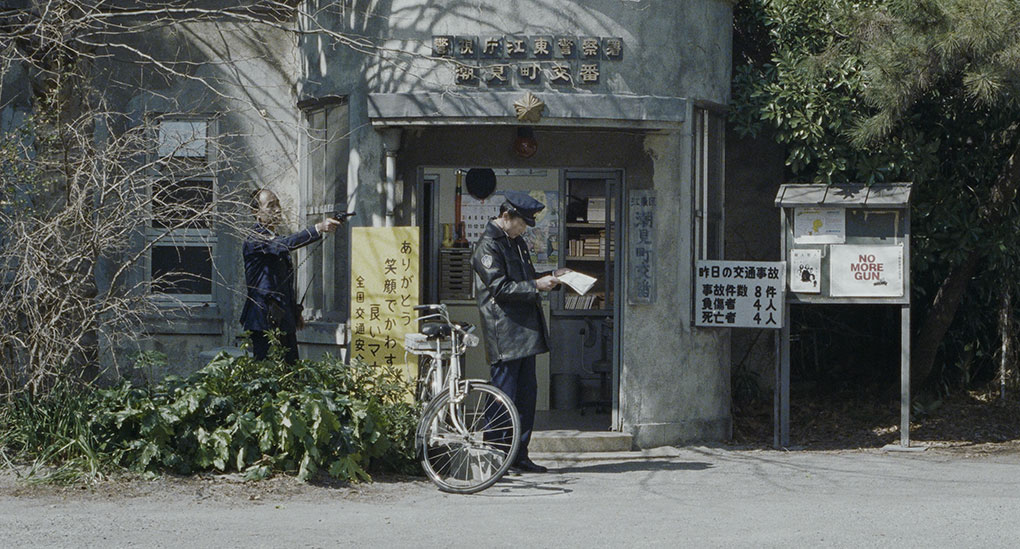
Despite its unhurried pace, in the early scenes the film does indeed play a crime thriller with horror overtones, but 27 minutes in expectations are confounded when Mamiya, after jumping from a roof on which he was silently perched, ends up sitting in a police box (a small, two-man police station) being questioned by the kindly Oida, who has brought him there after witnessing his almost suicidal leap. That Mamiya again turns this questioning around and indirectly pushes the policeman to murder his colleague does not come as a complete surprise, but that he keeps the appointment that Oida has made for him to visit the hospital the following day most definitely is. It’s here that he encounters Akiko, another individual whose very darkest desires he is able to unleash, but by this point the suspicion is that he is deliberately laying a trail for Takabe to follow.
There was much talk at the time about the boldness of having John Doe hand himself in to the investigating detectives in David Fincher's Se7en with a quarter of the story still to play out (and make no mistake, it is a bold move), but by the time Mamiya is in police custody for potentially inciting the killings, we are barely halfway through the film, by when it has become clear that Cure is definitely not a regular police procedural. Stylistically, it further distances itself from the genre norm, with Kurosawa's decision to shoot many key scenes long and sometimes motionless wide shots giving the film a studied, observational feel, which somehow makes what takes place within the frame more chilling than it would had he included the traditional cuts to close-up for emphasis. Combine this with the deliberately oblique approach to plot points and characterisation and you have a film that is destined to frustrate some viewers, but just as many should delight at not having the story beats spelt out to them in mile-wide, monosyllabic narrative strokes.
Atmospherically, Cure delivers in spades, with the encounters between Mamiya and his potential victims becoming increasingly unsettling. The effect is intensified by a superb use of sound effects and a dark and sometimes minimalist score by Ashiya Geirī, whose deep bass rumbles are sometimes inseparable from the effects track, giving the meetings between Takabe and Mamiya in the latter's cell in particular an extraordinary sense of menace. Equally effective is the almost offhand nature of the killings, with the two that we witness in part being observed in wide shot and carried out without a flicker of emotion, with just enough suggested (the policeman collects a large knife from the police box after shooting his colleague, then starts to drag the body inside for a mutilation we never see) or glimpsed (the bloodstained bed in Hanaoka's house when the camera tracks back from the window through which he has jumped) to suggest something far more unpleasant than Kurosawa has chosen to show. The most startling exception comes with the almost POV discovery of Akiko performing her first surgery on a doubtless randomly selected patient on the floor of a public toilet, which includes a brief but genuinely horrific close-up that will likely catch even the most prepared of viewers off-guard.
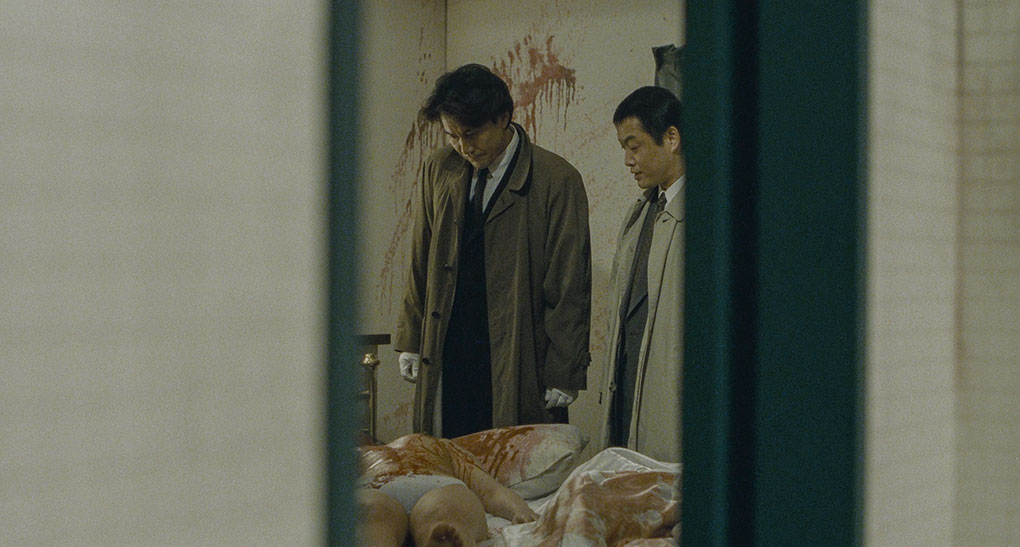
The toned-down approach to characterisation renders the performances secondary to just about everything else, despite the casting of Kurosawa favourite Yakusho Kōji (previously most familiar to western viewers from his roles in Imamura Shohei 's The Eel (Unagi, 1997) and Warm Water Under a Red Bridge (Akai hashi no shita no nurui mizu, 2001) and Suō Masayuki's Shall We Dansu?, but making his mark in 2024 with his winning lead performance in Wim Wenders’ Perfect Days) as Takabe, whose sudden bursts of anger seem almost out of step with his otherwise low-key portrayal but which are crucial to why Mamiya appears unable to work his destructive magic on the detective.
Despite surface impressions, for my money Cure is not a film about how police track down a possibly supernatural killer, but the capacity for dark deeds that lies dormant within even the most seemingly well-adjusted and passive individual, and the fragile nature of the emotional and moral core that defines our very nature as 'civilised' beings. It explores the idea that evil, far from announcing itself with leering melodrama, is sometimes so quietly banal that it can pass by unnoticed, leaving us only with its consequences and questions about ourselves and our dangerously surface-level judgement of others. Cure delivers all this and so much more in a sinister whisper, and in a manner that demands but richly rewards concentration and patience. 20 years on from that revelatory first viewing, it remains for me one of the most compellingly and uniquely haunting films of late 20th century cinema, and remains my favourite film by one of my favourite directors.
When Eureka released Cure on UK Blu-ray back in 2018, the results were a clear jump in quality over the Japanese Toshiba DVD that was my introduction to the film. This new 4K UHD release, also from Eureka, offers a similar leap in picture quality, and has to rank as far and away the best the film has ever looked this side of a newly struck and still pristine projected film print. Comparing the UHD and Blu-ray side-by-side, the improvements are instantly visible, and while overall the image on the UHD is slightly darker and the already earthy colour palette a whisper more muted on the UHD, the Dolby Vision HRD ensures that there is always more shadow detail here than on the earlier HD transfer, except, of course, in areas of the picture that were always intended to be shrouded in concealing darkness. The improvements are immediately evident in the early sequence where Hanaoka first encounters Mamiya on the otherwise deserted beach, with the detail sharper and more clearly defined, the dynamic range richer, and the small but visible movement of the image in frame on the Blu-ray completely stabilised on the UHD. Another example comes when Takabe and his fellow officers arrive at hospital to interview the shellshocked Hanaoka and enter via the basement car park, where detail on the darker side of pillars that is easily visible on the UHD is lost in pitch-black darkness on the Blu-ray. Later in the film, on the haunting wide shot of Sakuma standing in front of an old barn, the contrast and colour grading are both top notch on the UHD, and the detail building itself is far more distinct. As expected, all traces of wear and dust have been cleaned, and a fine grain acts as a comforting reminder that this was shot on 35mm film.
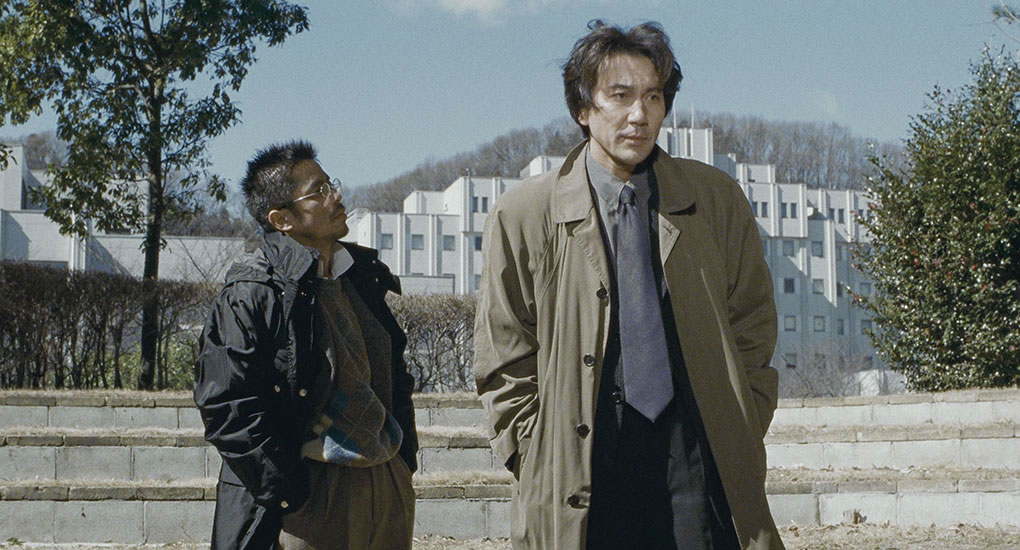
It's a slightly trickier call when it comes to the soundtrack. The Blu-ray represented a marked improvement over the DVD on this score, with the so-so stereo track of the earlier release bumped up to a far more expansive DTS-HD 5.1 surround track on the Blu-ray, which really showcased the film’s deeply unsettling use of sound. That disc also included a Linear PCM 2.0 stereo track, but this was noticeably inferior to the DTS surround mix. I was thus surprised to discover that the UHD only has one soundtrack option, and it’s not the expected DTS surround track, but the Linear PCM stereo mix. So what gives here? When I reviewed the Blu-ray release, my comments on the jump in audio quality referred primarily to the clarity, tonal range and bass response, and revisiting that disc for this review, that remains the key selling point of the track, with the surround speakers active but not for specifically directional sound, instead subtly widening the spread of ambient sound and music. While that aspect of the mix is missing from the LPCM track on the UHD, in all other respects it is the aural equal to the DTS track on the Blu-ray, boasting excellent clarity and tonal range, and having no detectable traces of wear or damage.
Optional English subtitles are activated by default, and I spotted no glaring translation errors on the phrases that I was able to understand with my limited Japanese.
Curating Cure (12:34)
Written and narrated by Asian cinema expert and author Tom Mes, this informative and very well assembled video essay examines Cure in relation to the J-Horror cycle and its V-Cinema (films made specifically for video-only release) origins. He also explores how the horrific real world murders committed by serial killer Miyazaki Tsutomu in the late 1980s triggered a backlash against violent horror movies, which unexpectedly paved the way for the more subtle and atmospheric approach taken by Cure and its contemporaries. I was both rivetted and educated by this excellent and newly commissioned inclusion.
Memories of Cure: Interview with Bong Joon-ho (28:29)
Celebrated South Korean filmmaker Bong Joon-ho – he of Memories of Murder (Salinui chueok, 2003), The Host (Gwoemul, 2006), Mother (Madeo, 2009), Snowpiercer (2013) and Parasite (Gisaengchung, 2019) – here talks at length about his passion and admiration for director Kurosawa Kiyoshi and Cure, which he examines in enthralling detail. He compares Kurosawa’s unsettling sound design to that of David Lynch, praises his masterful arrangement of actors in wide shots, explains why he finds the question “Who are you?” in the context of how it’s asked in the film so disturbing, and notes that unlike most horror films, the quieter Cure gets, the more terrifying it is. He recalls first seeing the film on VHS and admits that he’s watched it every year since, and points out that where most horror exploits our fear of being killed, Cure instead taps into a fear about how we might react if we killed someone. He also admits that he based the serial killer in Memories of Murder (the real killer, Lee Chun-jae, was unknown at the time but has since been caught and imprisoned) partly on both Mamiya in Cure and Ogata Ken’s character in Imamura Shohei’s Vengeance is Mine (Fukushû suru wa ware ni ari, 1979). There’s so much more to get your teeth into here. Another terrific special feature unique to this release.
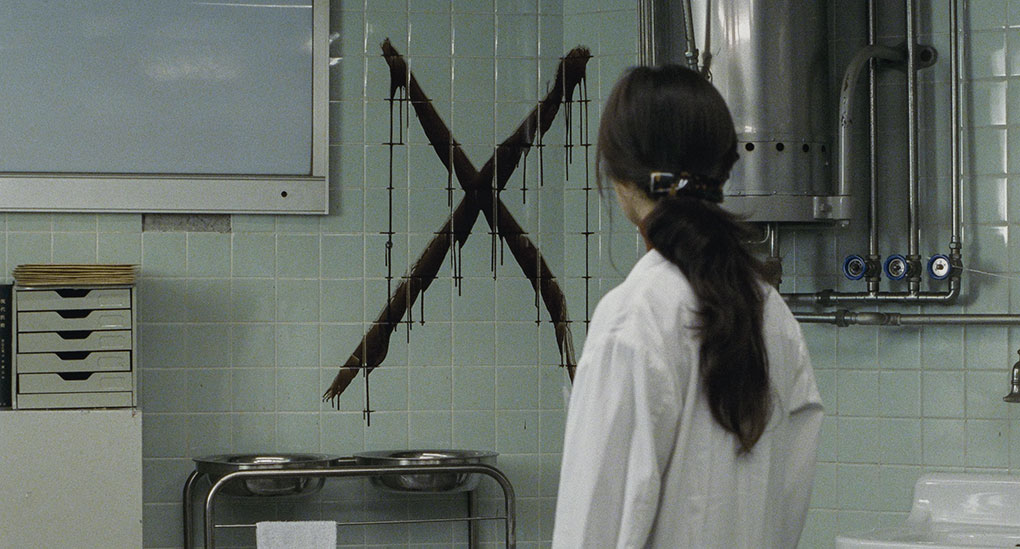
Kim Newman on ‘Cure’ (14:16)
In a special feature carried over from the Blu-ray release, the always engaging critic and novelist Kim Newman delivers a cheerfully enthusiastic assessment of the film, championing Kurosawa as a genre filmmaker working at the top of his game at the time of recording (which Newman handily confirms was 2018), makes some interesting comparisons between Cure and Larry Cohen's God Told Me To (1976), discusses the film's underlying themes, praises the film’s temporarily pace-altering chase scene, intriguingly describes the film’s horror sequences as Bressonian, and plenty more. He also talks about the implications of the ending, so I'd definitely save this one until after you've seen the film.
2018 Interview with Kurosawa Kiyoshi (16:53)
Another special feature carried over from and recorded for Eureka’s 2018 Blu-ray release, one that wisely covers alternative ground to the also included archive interview detailed below, and as a result this complements rather than duplicating its content. Here, Kurosawa talks about how he first got into filmmaking via Pink Cinema (a uniquely Japanese sub-genre that weds social drama to softcore porn to sometimes unexpectedly involving effect) and V-Cinema, his long-standing relationship with actor Aikawa Shō, getting Cure off the ground, the improved opportunities to make horror or horror-themed films, and more.
2003 Interview with Kurosawa Kiyoshi (19:37)
A 2003 interview with Kurosawa – one I'm guessing was conducted for an American DVD release (the optional English subtitles use the American spelling of certain words) – is also carried over from the Blu-ray and remains a welcome inclusion. Kurosawa here discusses the inspiration for the film, the nature of identity, the use of frame space in his work, the difficulty of finding dilapidated locations in Tokyo, the meaning of the title (there are spoilers here), his long-standing relationships with production designer Maruo Tomoyuki and lead actor Yakusho Kōji, his favourite American films, and more.
Original Japanese Trailer (1:11)
Despite its brevity and an ending so sudden that it feels almost as if the last half is missing (the music just stops mid-stream), this Japanese trailer manages to cram in a whole raft of spoilers into a single minute and should definitely be avoided if you’ve not yet watched the film.
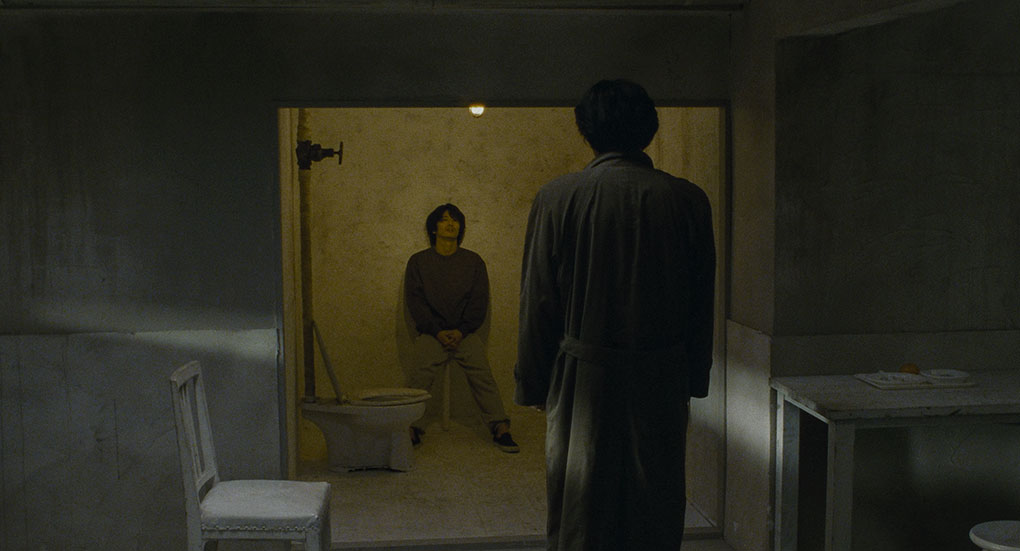
TV Spot (0:40)
A little more suggestive and less spoiler-heavy (there still one, but it’s over in seconds) than the trailer above.
US Release Trailer (1:40)
In far better condition than it was on the DVD (where it was low resolution and windowboxed), this smartly edited American trailer, in the tradition of how foreign language films are still often marketed in the west, avoids shots in which characters deliver any dialogue, presumably in the hope of fooling the subtitle-phobic.
Also included is a Collector's Booklet featuring essays by Tom Mes, but this was not available for review. Mes really knows his stuff, however, so I'll put money on it being an enthralling read.
This is my third format on which I’ve reviewed a film I was championing from my very first viewing, and Eureka’s UHD is far and away the best home entertainment release this remarkable and deeply unsettling film has yet received. A superb 4K transfer, a top-notch stereo soundtrack, and a first-rate collection of entertaining and informative special features make this an absolute must-have for fans of the film, the director, or darkly themed psychological horror-thrillers in general. Even if you own the previous Eureka Blu-ray, consider this UHD an essential upgrade. Very highly recommended.
* https://www.filmboards.com/board/p/1381698/
|